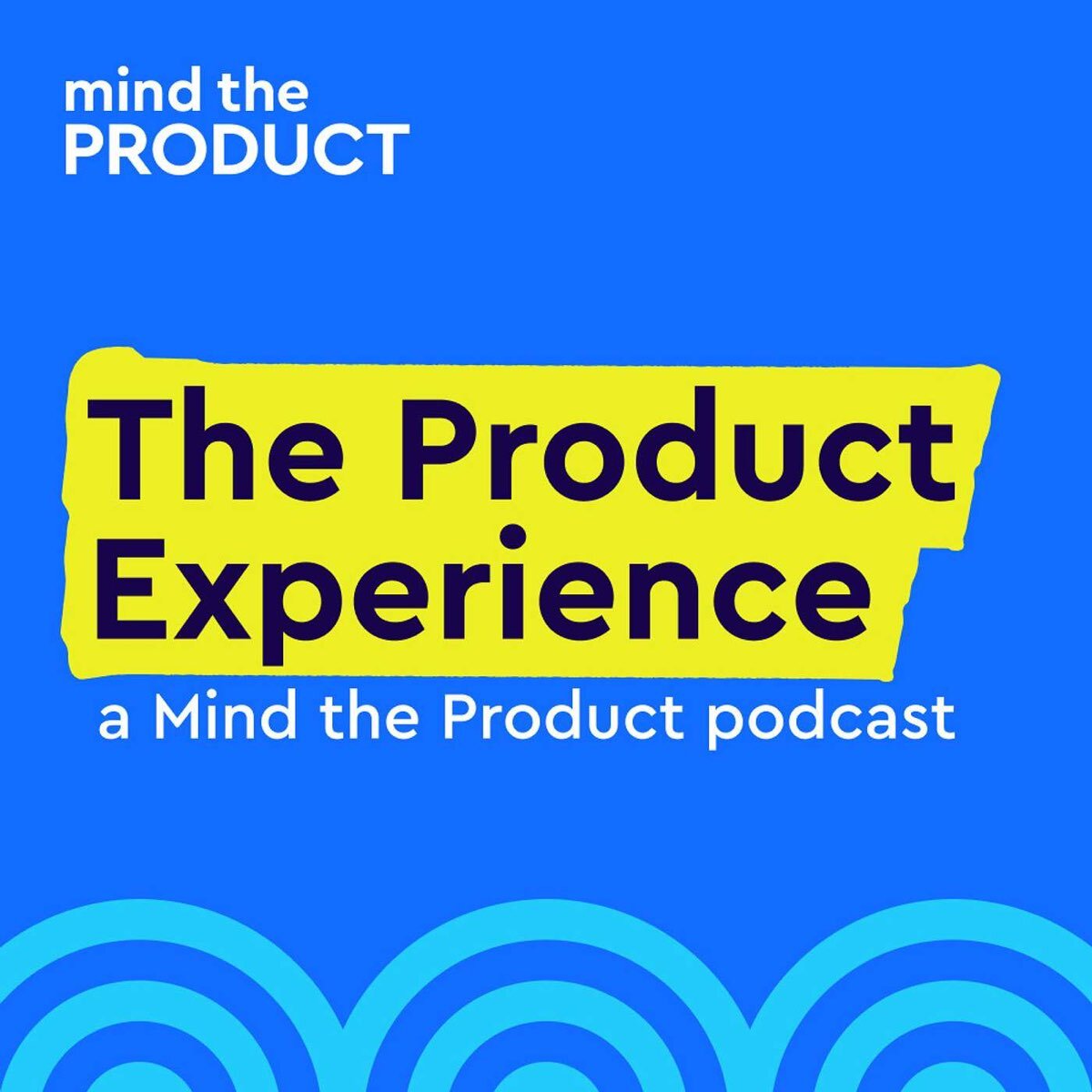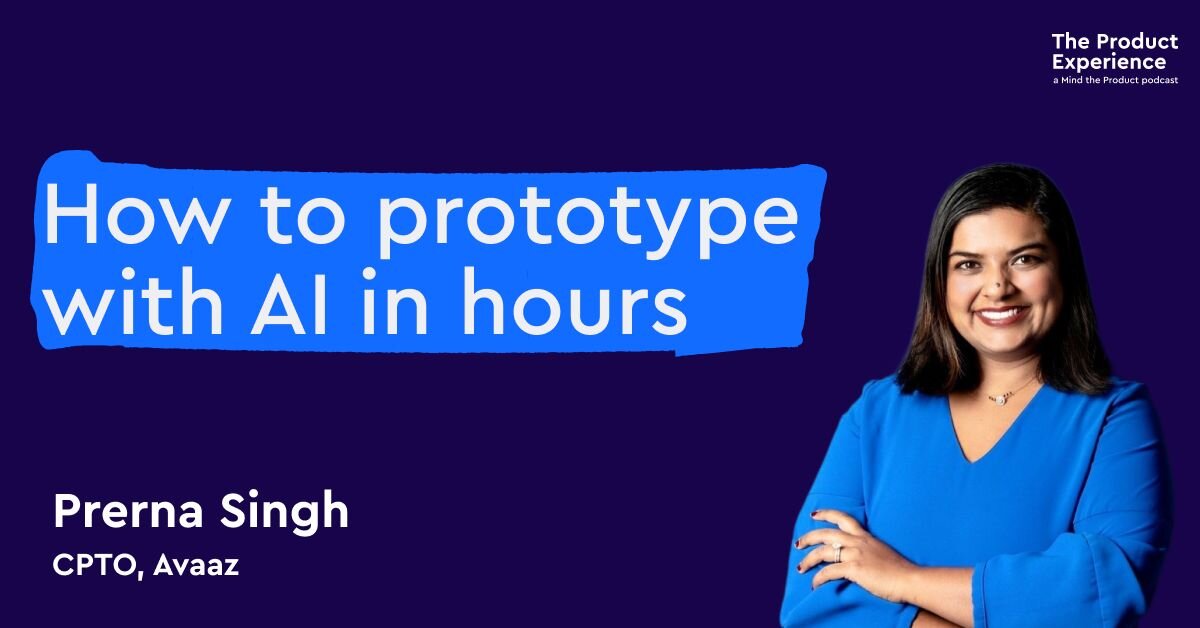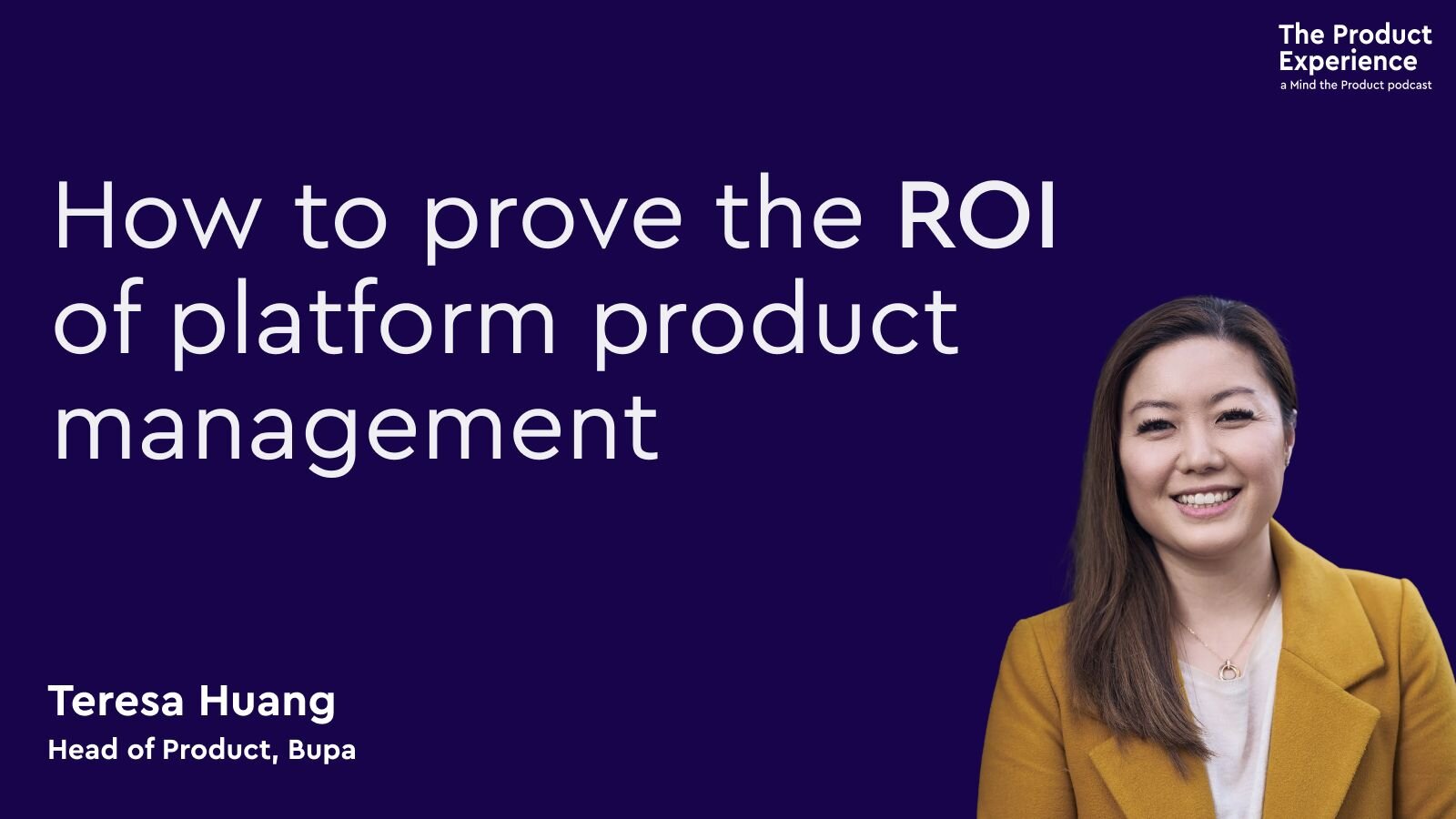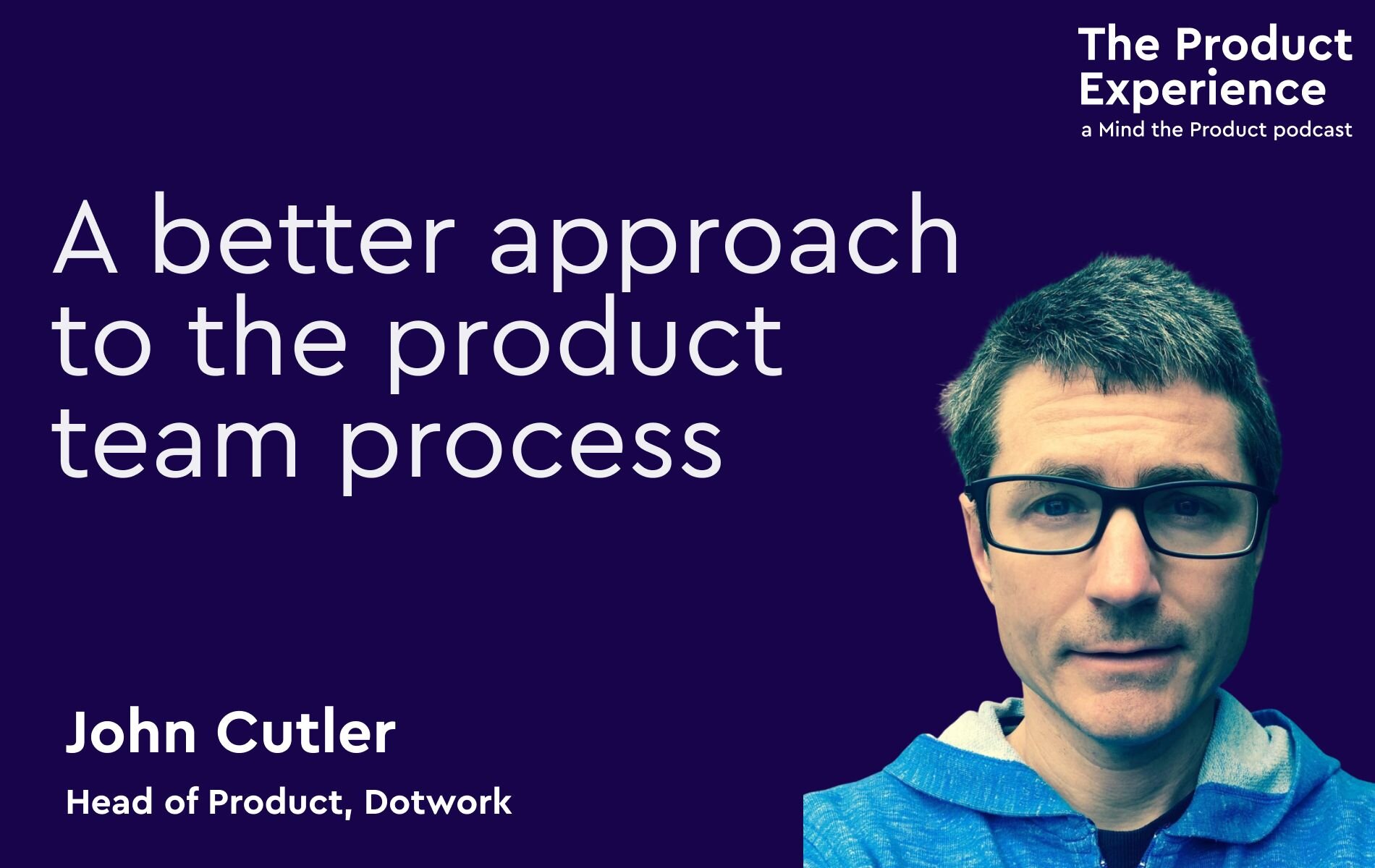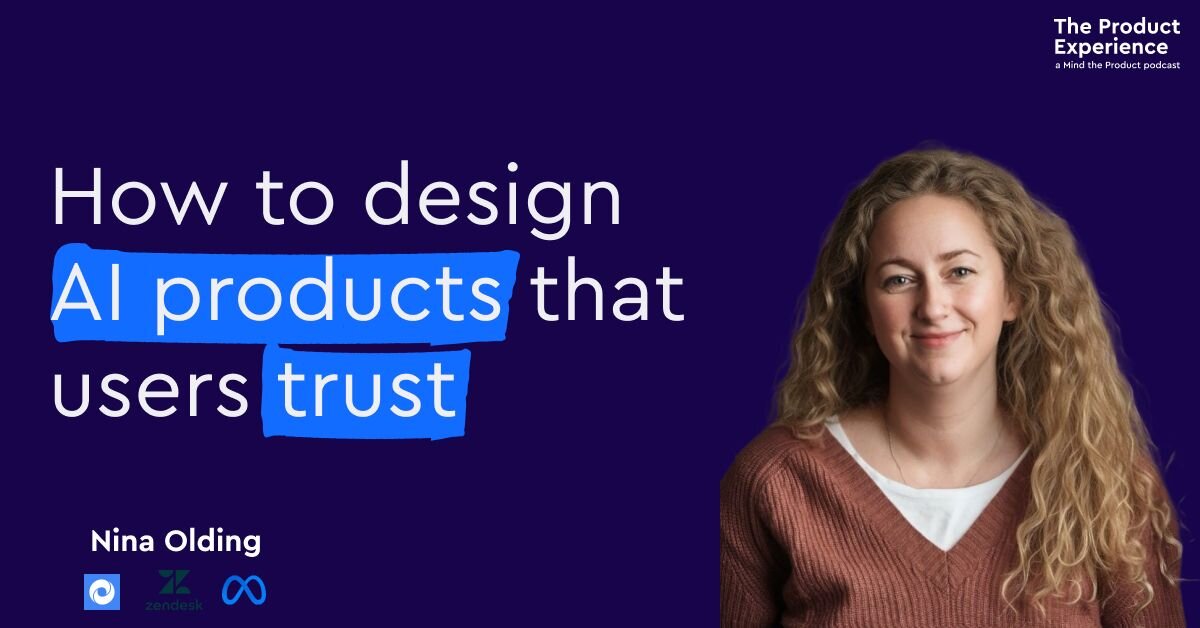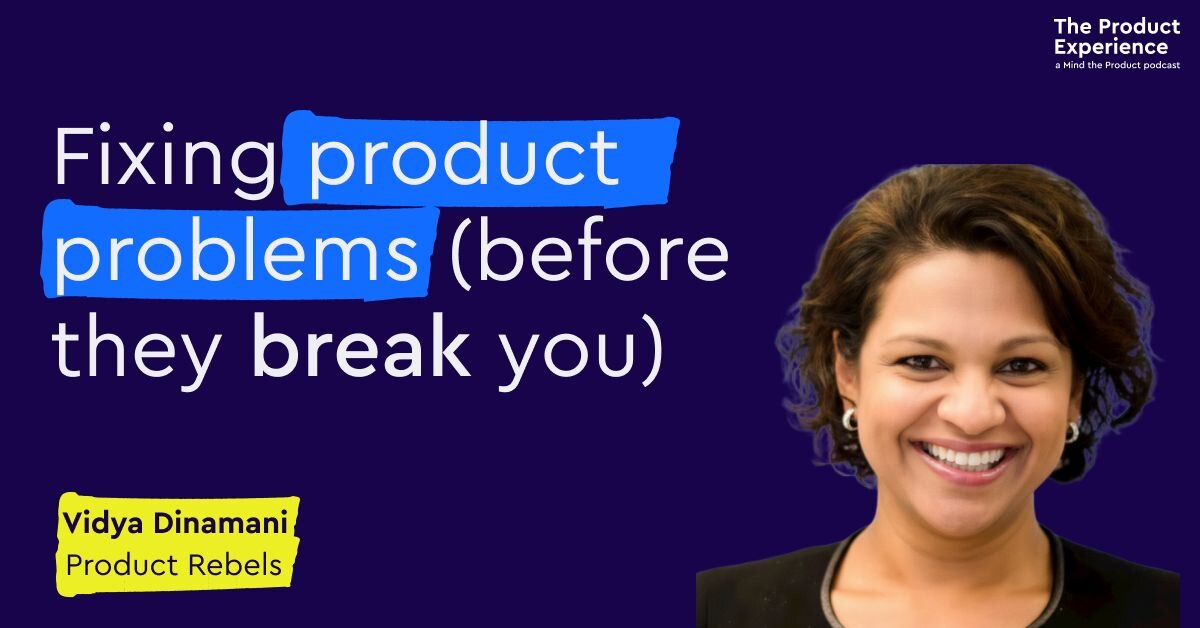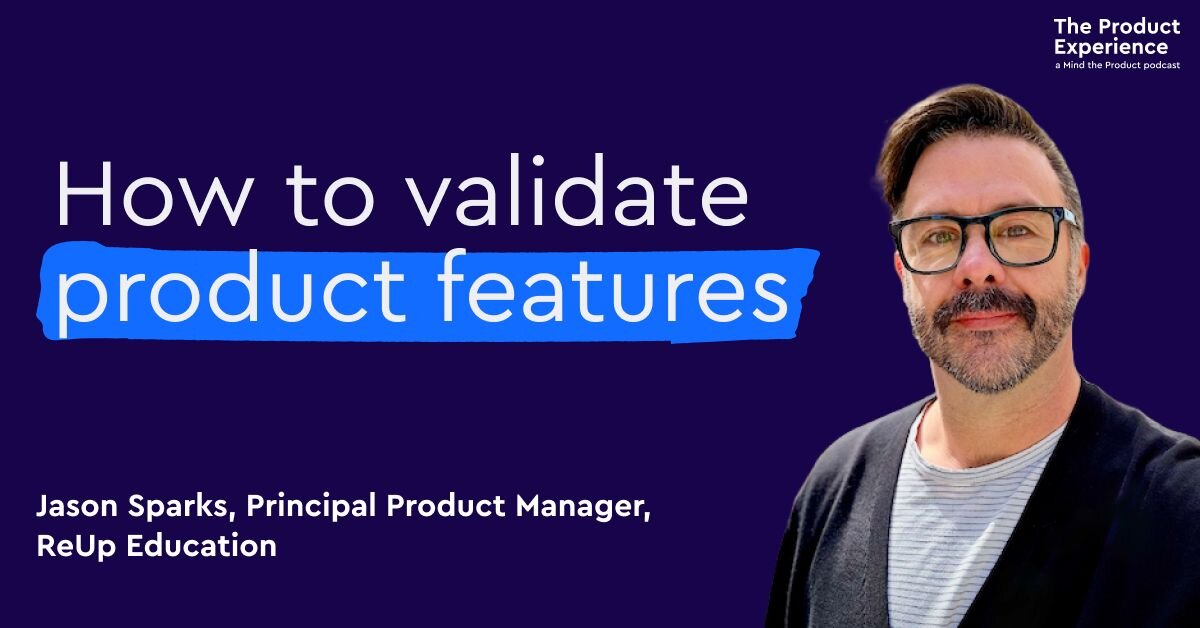Have you encountered the challenge of delivering more features quickly with limited resources in your product? Many product managers tend to fall into the trap of becoming feature factories.
In this week's podcast, we had a conversation with Assaph Mehr, a product leader and coach, who shared insights into the analogy of transitioning from a factory to a garden.
Join us to learn how to adopt a gardener's mindset as a product manager, inviting people in, creating new attractions, and ensuring the consistent quality of your garden for your customers throughout the year. And let's face it, who doesn't appreciate the beauty of gardens?
Featured Links: Follow Assaph on LinkedIn and Twitter | Assaph's 'Product development: or how to turn factories into gardens' piece at Mind The Product | Felix The Fox Mysteries | Taylorism / Scientific Management definition | "Always be closing!" scene from Glengarry Glenn Ross (1992) | 'Pave the cow's path' piece on Three Saplings
Episode transcript
Lily Smith (00:00):
It's officially spring, Randy. How is your garden looking? Is it flourishing?
Randy Silver (00:05):
Oh, you've been to my house, Lily. You know how small my garden is and just how bad I am at tending it. I can never even remember the name of the lovely plants that are just now blossoming here. It's chlamydias. No, no, that can't be right.
Lily Smith (00:21):
I think maybe you mean camellias?
Randy Silver (00:25):
Maybe.
Lily Smith (00:27):
My garden is flourishing. But unfortunately, it's all the plants that I don't want that are doing so well.
Randy Silver (00:37):
I wonder, could that be a metaphor for how we handle our approach to managing products? I mean we've talked to people about gardening metaphors before. We talked to Andy Polaine and Amy Wagner about this.
Lily Smith (00:50):
You're right and today, we have Assaph Mehr, General Manager of Castlepoint Systems, novelist and also caretaker of a Tasmanian garden who is here to chat to us about how our product culture should be more like a garden and what we can do if it isn't.
Randy Silver (01:06):
And I love the fact that he compares gardens to the antithesis of factories, but he also told us my favourite new fact before we started recording, he said that a wombat is basically a pillow with legs. And for the rest of his insights into the gardening approach you'll need to actually listen to our chat with him. So let's get right into it.
Lily Smith (01:32):
The Product Experience is brought to you by Mind the Product. Every week on the podcast we talk to the best product people from around the globe. Visit mindtheproduct.com to catch up on past episodes and discover more.
Randy Silver (01:43):
Browse for free or become a Mind the Product member to unlock premium content, discounts to our conferences around the world and training opportunities. Mind the Product also offers free ProductTank meetups in more than 200 cities and there's probably one near you. Assaph, thank you so much for joining us on the podcast this week.
Assaph Mehr (02:05):
Thank you. It's a pleasure to be here.
Randy Silver (02:07):
Can you just give us a quick intro to kick things off? What do you do now and how did you get into product stuff in the first place?
Assaph Mehr (02:15):
I am a general manager of technology and product in a small startup, which is very brave because my background is in product management and they put me in charge of engineering. I've been in [inaudible 00:02:26] for about 25 years, I've been a product manager for about half of that. When I wasn't really happy as an engineer, that was all right but it wasn't for me. And then I worked for a company and so actually took a role in tech support and saw what product management is and went to the CTO and asked him, "How do I get in on this goodness?" And that's how I got into product management. The past few years I've been leading teams of product managers and now as I said, I'm building group of engineers and product managers.
Randy Silver (02:57):
So we're going to talk today about feature factories and I think everyone who's listening probably knows what a feature factory is. But there's a question that we don't always ask which is why do companies create feature factories in the first place?
Assaph Mehr (03:15):
I think there's several reasons, but the two main ones I can think of is one is just traditional management. You have a company that was a large company that and grew, or a recent company that just brought in a professional CEO and they're used to traditional management. And even though they've heard that Taylorism is bad, they kind of gotten used to, "Okay, we're just going to run it any other business, what's your input? What's your output? What's your bottom line at the end of the quarter and get on with it." And that just doesn't work on engineers and on complex problems. Data isn't fun enough is tech heavy founders.
(03:55)
When you have a founders who's an SME in their field they think that well, they know everything that they need to do, so they tell the people around them to do that because they're the SMEs. And it's great when you're in the zero to one phase because you have the SMEs and you're going after the market and you know exactly what problem you're trying to solve. But it's not so good when you're trying to scale because it just can't scale when you have one person who knows everything and the others are just kind of following blindly without a clue. So it's unintentional but it happens.
Lily Smith (04:27):
Do you think that we have traditionally seen a lot more feature factories that's been the normal way of working as well? It feels like a sort of dirty phrase and something that no one wants to do because it's the wrong way to do product management. But are we seeing a shift away from feature factories into the kind of more modern way of doing product management? Or is there still a necessity to do this kind of feature factory style of product management as well?
Assaph Mehr (05:07):
Interesting. I think the task situation where in some cases a feature factory might work, and if you are purely transactional in a sense, if you are selling fast moving consumer goods or desktop software that you sell and that's it. In which case there might not be much of a relationship, there might not be much of a ongoing engagement and you just really need to crank out a product and sell a unit of it. But in product management the world is moving away from that it's all about subscription and consumption it's all about long-term engagement. Even salespeople now realise it's the long term engagement. It's not the always be closing of lingering and loss. It's the let's build this relationship let's help you solve your problem and stay it as a partnership. And those model village factories just don't work they break. I think along the industry it's drastically improving. There's certainly a lot more books and articles and videos and resources available today than there were even five years ago, definitely when I started. But the fight is not over yet.
Lily Smith (06:16):
And I think you had a really nice analogy for the opposite of a feature factory, which is a product garden. And I love this analogy because I love gardening, but tell me more. How is the opposite more like a garden?
Assaph Mehr (06:33):
Garden, yeah. Well, I love gardening too. I live in Tasmania, like we said, it's wonderful place outside, but I was thinking more it could be a city park or an amusement park anything that people come to visit. One when you think about factory you think about heavy machinery, belching smoke, polluting the environment. A lot of water factors aren't necessarily like that, but that's kind of the mental image. And when you think garden, you think, "Oh, it's lovely flowers, it's calm, relaxing with the birds tweeting." But the point is people come to a garden to have fun, but do a job, have a better party for the kids, entertain themselves by riding a bike, do some fitness on the equipment, whatever it may be. And you want them to keep coming to the garden so you build what they want in there. You try to see, "Okay, we have lots of families, so build, let's build a barbecue area.
(07:31)
Or there's another park on the other side of town with a really cool BMX off-road track. So there's the [inaudible 00:07:40] we will not compete in that kind of thing because all the hardcore people are going over there. But on the other hand we can maybe build a learning track for bicycle for little people still learning how to cycle. And it's a mental model it's hard to think about it. Instead of thinking to yourself, "I work in a factory, I put my clothes in the morning, do my nine to five and some sort of mechanical output work." You're trying to think, "Okay, how do I create engagement with a community? How do I get people to enjoy coming here repeatedly?" And I think that's the name of the game the repeat business that we're trying to build.
Randy Silver (08:21):
What are the features of a product garden? We know in a factory that it's something where people are just telling you just build the next feature, just build the next feature, the next feature. I get where you're going, but how would you define a product garden as an alternative?
Assaph Mehr (08:42):
First thing I'd like to clarify this is a mental model. It helps me think about what I do and I thought it'll help others as well it's not a framework which is going to be the next dirty word out of process. If you consciously want to think about user engagement rather than trying to think about how can we build stuff that we can shove down their throat, think about how can we build something that they want to come? So when you start yourself from this point of view, the way that you engage with people the stories that you tell yourself is the story that you tell to others. And those others could be the stakeholders in your company and they could be the actual customers, right? It's just you're coming from a place of this is fun, this is good, this will help you do what you want to achieve in this wonderful lovely weather weekend or in this case solving your business issues.
(09:41)
But you can also slightly shift the conversation with your stakeholders internally. Instead of saying just build this, you ask them, "Okay, why? What have you seen that helps? What are we aiming towards? Can I get a little more context?" And then you can work a little bit and say, "Look, we're seeing engagement over here or we're seeing not as much in engagement over there. Perhaps we can work on that." You can, those founders and SMEs that I've spoken about in the beginning they're convinced of their own vision. You can count to that, obviously not by telling them, Marty Cagan said we shouldn't do it [inaudible 00:10:22] that doesn't convince people.
Lily Smith (10:25):
If only we could say that, right?
Assaph Mehr (10:29):
If only we could give everyone the book and said do this that. But if you really pay attention to the language that you use, if you open and curious and transparent about what you're seeing out there in the world, and by curious, I mean being honestly curious. If the SME sees something, if it's the founder of the company, they've been in this field potentially a lot longer than you they see the market a lot better than you might.
(10:54)
They might see something that you don't. So try to find out what they see that you don't once you do that, once you try that you can give them the data to say, "Yes, this is working or this isn't quite working. Or look, we are seeing this growth of data over here." So famous saying about some university I think where people were designing a garden and decided where should we put the path? And the dean told them, "Wait till the winter." And in the winter there were paths in the snow and he said, "You see those? That's where people walk put the pavers there in summer." And it's kind of like that right? You see where people are interacting with your company. You should have this data and say, "We're seeing the traction there, we're seeing the market pulling us there. Let's make it easier for them. Let's put the pavers, reduce the friction make the experience better for the users." And I think that is how you can take the stakeholders and then the whole company on this journey of moving from a factory to a garden in [inaudible 00:11:50]
Lily Smith (11:51):
One of the things I kind of love about the garden analogy as well is this image of product managers being gardeners themselves and being kind of caretakers of the things that they've planted or I guess the services that they've built if it's a little mini bike roundabout or whatever. Does the analogy extend out for you in that way to the marketplace and the market conditions and the environment and seeing some things fail and then die and then some things kind of thrive? Or is it sort of more limited to just creating a space that encourages people to come back?
Assaph Mehr (12:38):
This is why I love storytelling for business because this isn't an aspect I actually thought about. So creating this analogy, this story for the business, so let's use a garden. You say, "Oh, well gardeners actually watch things die and prune them out because it just doesn't work." There's no emotion in it right? And I think that's a really good something that you can add to this mental model. If something doesn't work it's just dead wood just remove it, don't feel emotional, don't get invested in a particular solution in a particular area. Even if it was your favourite plant it's dead it's time to take it out put something new in its space.
Randy Silver (13:22):
So my wife and I have this ongoing discussion around gardening because we look at our garden very differently at times. She looks in and says, "Why haven't you weeded?" And I said, "Looks good to me." And that's when I found out that the official definition of a weed is simply a plant that you don't want. So from this perspective when I know I'm torturing the metaphor here in a big way, but in trying to put together a garden that is welcoming, that is nice. People sometimes might have different perspectives on things. How do you decide what to prioritise and how to make sure that the garden is the right kind of garden?
Assaph Mehr (14:05):
This is really product strategy one-on-one, right? You have a vision in your head of what the garden should be, how should people interact with it, how should people engage with it? And it's all about engagement. And then you have your statistics of where you are, where are the users clicking, what are they doing? What is the win loss analysis? Tell us about features that we have or don't have that the users want to do it. And then you say, "Okay, if we are here and we want to get there, how do we prioritise? Where do we focus?" And it's focused like any other focus. If you try to build the whole garden up front, you have a massive task, then that's how public works for them. If you have a large area and you say, "Okay, let's focus on the northeast corner, let's put on sub trees and let's put a slide, let's see how it goes."
(14:59)
And people, oh, okay, look people are going there. Let's put a swing next to the slide. Then in a B2B people are using our chat message more than using our game. Let's build a chat message out. So it's not anything new it's just the way that you think about follow the engagement, follow where people, it's all about people. Even traditional supply chain find out during the pandemic that it's all about the people. You cannot run the supply chain or [inaudible 00:15:32] your factory is run if you don't have drivers on the ground. And if you're trying to sell digital products it's always purely about the people and what they need to do, what they're trying to get done, what experience that they're trying to get out of your products. And I've seen a lot of companies, especially in the enterprise saying, "Oh, well we don't have a lot of users and our product is super complex, so we don't need to invest in user experience. They'll use it anyway." And it's like, "Yeah, you'll be disrupted." So yeah, follow the engagement.
Randy Silver (16:11):
Are you ready? For Mind the Product San Francisco conference happening in June.
Lily Smith (16:17):
If you've been before, you're probably feeling a bit like me, desperate for your MTPCON fix. And if you are new to it this is the product conference not to miss. If you're a product person looking to advance your career, expand your network, get inspired and bring the best products to market, then this is for you.
Randy Silver (16:37):
So what can you expect? Well, MTPCON is known for their epic lineup of speakers, renowned product leaders with invaluable insights and tactics to share. They cover a range of exciting topics that will challenge and inspire you to step up as a product manager always with something tangible to take away into your own product practise.
Lily Smith (16:59):
And don't let location hold you back. Even if you can't join in person in San Francisco, you can still be part of the action with their convenient digital only option.
Randy Silver (17:10):
This event is a must attend for anyone seeking to elevate their product management game. Find out more and book your ticket at mindtheproduct.com/san-francisco.
Lily Smith (17:28):
So what's your experience been of moving from an environment where it's more sort of the feature factory type of setup and then more into this kind of garden type environment?
Assaph Mehr (17:46):
It helped me in my, like I said in my own sanity, I have seen sometimes the, let's say the upper limit of that when you try to push a company and you just, you've reached a certain limit. And the company's just not ready to move and you keep trying at that point I also change companies, but I think the impact is noticeable and it's noticeable whenever you try to implement a product led culture. When you say, "Okay, look, we have this thing, this is good, but let's listen to our users. Let's see where our users want to interact with the thing." I'm using a garden analogy and a lot of other people are using different analogies and the only thing that doesn't work is just like the soapbox standing there and shouting at people. You need to do that because this is right. Well, the things that do work are language, metaphors.
(18:43)
When you're trying to enact a organisational transformation you change the language that you talk about things. And that slightly changes the perceptions of how people think about their work and how they thinks about themselves, how they think about the company. And you can, as you try to do it you will get resistance. Organisational transformation is bloody hard, but I think this persistence will let you know where you can get to, what's the outcome of that? And you can subtle, you can slowly start to see the shift. You can start to see people are thinking a little bit differently. Let's not just think about closing the deal. Let's try thinking about closing the right deal. No, that won't happen immediately and no that won't happen to every deal because if you know the $10 million customer comes and says jump and the salespeople and the CEO will say "How high?"
(19:41)
But for the majority of them you can say, look, we kind of thinking the product is going in that direction, not in that. So it's going to get a little bit harder to prioritise that customer because our engagement and show the data, always show the data because that's something everybody understands because you can usually tie down a dollar value to the engagement of users and say, "Okay, this area is more active, this area is more engaged. We want to double down on that, we want to grow it out, we want to plant more trees or whatever it may be around it." And sometimes it'll succeed. You'll see people start to shift their thinking around it, and that is what being product led is all about. And sometimes they'll be like, "Yeah, no, we still have to close those deals and yeah." Okay.
Lily Smith (20:38):
Do you find that when you are up against changing the culture of a business that generally when we talk about this on the podcast, is usually associated with a C-suite quite often the CEO or the founders that are resistant to this because the culture of a business is set typically by the founding team or the C-suite. Do you find that it is at it's generally these people that you spend most of your time kind of convincing or persuading or storytelling to? Or can it be that you have to do this work with the wider business as well?
Assaph Mehr (21:21):
Surprisingly, no. It's not just a C-suite sometimes it's very much from the grounds up that you need to change things. I've literally worked in a company with this. We had a new CEO and he handed everybody the Empowered book and it's like, it's great it's just going to take a while, and it worked obviously in the other way. Well, you like really want to hand them that Empowered book like let me work. I'd say that you cannot do it without support from the C-suite, so you need to manage up first to get that backing. But even with support of a CEO changing an organisational culture takes a lot of time. When you have teams of engineers globally distributed or not however large they are, but you're talking about a large number of people changing their perception how they used to work. If the, say previous management was all about, let's get the numbers done for this quarter, let's make our balance sheet looks good, let's close those deals, or we can't keep you on the payroll.
(22:32)
People get used to the, okay, we're just going to do what you tell us. We're going to do it exactly like you tell us. And nevermind that the whole agile movement started by people getting blamed for building what they were asked to build and then told this wasn't the right thing. But then if people are so used to that you can't just turn them a magic wand tell them, "You're empowered, go research your market and follow your hunches." And they're like, "Yeah, no, I don't know what to do with this." So it is a different type of conversation where you have to build a context around it, give them the tools and the habits of working with the market and the product together to build something to build an engagement. That's why I drag engineers on calls with me and do everything I can to get them closer to the market.
(23:29)
And I've done that even when I was just a product manager and I've done it back then from purely self-interested activities. I figured that if an engineer asks me a question that takes me a five-minute answer and I give them an hour long lecture, they will understand the context, they will understand what they need to build and how they need to build it, and they won't ask me again. So they'll have some free time afterwards. But building these kind of enlightened teams helps, and this is sort of a grass root movement and it helps you get everyone aligned and on the same direction that you're trying to go to.
Randy Silver (24:05):
In the article that you wrote for Mind the Product on this topic, one of the things that you suggested is that we should be a little bit subversive in our communications. And I'm curious about what you mean by that, because what you've talked about so far doesn't sound subversive, it sounds engaging, but I think you might have a nuanced take on that.
Assaph Mehr (24:27):
It's subversively helpful. First, I said approach everything with curiosity. If you're being told to build a feature there might be a good reason for it right? It might be a deal that's going to mean we have more than three months of salary in the bank and the company can keep going on. And when you know that, yes, we need to close this deal in two months or we are not going to go past that, it puts a different side, different spin on things. But once you have the context of the founder there are other ways to be really, really helpful around the company. A lot of, one of the problems of feature factories is it says you stand in the corner in the machinery room and you crank your little handles and you get us the features out and stay there in the corner that, no, not the customers that come to the showroom don't see you.
(25:22)
But getting in front of customers is the single most important thing that a product manager can do. So how can you get them in front of customers when you're told not to? Well, salespeople run demos. Oh, can I help you run a demo? There's a new feature and I'll can run into the demo or the support people or customer success people have a post installation problem because it's a bit complex. I can help you. I know I'll just come on a customer call and help you. And if it's a consumer good, you can also go out. If it's small B2B, you can find out where he uses hang off channels and just chase them. But even in enterprise software there are ways that you can find those people. Do the demos, sit in, ask to be helpful, and that gets in front of customers, and I found that I run a demo that I can do with my eyes closed, but at the beginning I'll say, "Oh look, can you just give me a brief explanation of your environment and how you work?"
(26:20)
And you'll get a five, 10 minute conversation where the customer will give you their context and that is pure gold. That's absolutely worth the rest of the hour. That will just give my spiel of the demo or run through a post installation or whatnot. And then when you're trying to shift mindsets you can again go to the executive look, yeah, we have those 20-page requirement documents, but I've written a couple of one pages about ideas, so can you help me flesh them out before we build the whole 20 pages? And you just give them a link canvas or whatever, one page template that works for you and you back it up with data and you show them, "Look, I found this data and this is sort of an idea. How do you think about it?" And people start saying, "Okay, maybe I don't need to spend writing a 20-page document or expecting you to write a 20-page documents when we can get the conversation going a lot sooner."
Lily Smith (27:24):
So I want to take it back to the garden. I really just got to try and get as much out of this analogy as possible.
Assaph Mehr (27:35):
That's what it's there for.
Lily Smith (27:38):
Okay, so in the garden we have to deal with weeds and pests, sometimes bugs, but sometimes bugs are good, but in this case not good. So just thinking about how this applies kind of in the garden analogy, but also then translates into your work and your kind of product culture, what are the weeds and the pests in the product culture that you're trying to create and how might you address them?
Assaph Mehr (28:12):
I think they're literally called bugs in both cases for a reason. I think the main concept, like we said before, is you're removing the dead wood. If you don't keep pruning, if you don't keep removing the broken stuff then people won't come to it. If you have a forest and half the trees are dead and you keep planting new ones without removing the old ones, people are going to say, "Well, this is kind of ugly." Or if you have a playground and you have that original slide, which is rusty and pokey and people say, "I'm not going to take my children there.
(28:51)
I don't care that you have a very nice swing next to it. They might try that slide and then scratch himself and get tetanus." If you don't polish the product, if you don't build in quality into it, if it's not a good experience overall, if you neglecting, if you have, ooh, that was a good idea at the time, it didn't work out, but we had that one user who's still using it, so we left it in and all the other customers keep trying to poke it and then get cut.
(29:20)
People are going to have a bad experience or if it's not bad, they're going to have a blah experience. And that is not an engagement that we want. You want people to really want, you want people to be excited about using your product. This is why the importance of design comes through so much because as product managers, we tend to think that we understand the customer so we can design an experience for them, but we haven't been trained as experience design and it shows so, and I'm guilty of that myself too. So I've designed things for myself and later I was like, "Yeah, that doesn't work. Why did I ever think that was a good idea?" So put that design in, put the quality in by constantly polishing it. I've seen in corporates a lot of, oh, this is an argument I'm not going to take it's a hill I'm not going to die on. This is the one thing that you really need to fight for. This removing of the dead wood, this finishing up what you started, and if it doesn't work kill it right?
(30:22)
I think it's the number one thing that you can help long-term for engagement in your product can. If you're the product manager of the team, that's another way of being subversive can help because you just ask the engineers, "How long do you think it'll take you?" Okay, so we're going to tell everybody it's going to take three times that because we know it's going to take you twice that amount and the other increment we'll just reserve for some polish that we otherwise won't get the time to do. Not that I would ever advocate lying to my managers who might be listening, but you know.
Randy Silver (30:57):
I think we've covered the dead wood aspect before from a different angle or at least a different metaphor of killing zombies and killing zombie features and things like that. Which is not quite as nice sounding, but maybe more exciting depending on which month in here.
Assaph Mehr (31:16):
I think that's the importance of storytelling when you just keep trying these analogies and a garden might not work for your company. Maybe it's the shooting zombies that works for your companies keep trying telling stories until you get the message across.
Randy Silver (31:30):
I think the killing zombies works if you're just trying to clear the dead wood aspect. But in terms of planning for the future and making something that grows and the idea that you have to come back to something and see it grow over time and something that you plant now may only really blossom a little bit later on and things like that. I'm sure we could go all the way down with annuals and perennials and other kinds of things like that too. But I'm curious, as you've shifted the mindset in places that you've worked with this, what's gone well and where was it a challenge to extend this metaphor to get people to come along the journey with you?
Assaph Mehr (32:13):
It works well when people understand that you're trying to invite users to come back to have a good experience and keep engaging with your product. And it doesn't matter if it's engineers or CEO, right? CEO may care about the repeat business like the AR. Engineers usually don't find it as motivating as much as CEOs like to think it's motivating. When you give people a different model that they can think about the work about building engagement that works well. I've seen it in some companies where there was, you can see people to start to think about or being excited about watching the data, watching the user stories, not just the hero stories, but also the repeat engagement that the small anecdotes of people keep coming back because of that feature. And you can tell them, look, we've built it. We know it works we know it got people excited. Let's build on something on top of that let's extend that. And that's connecting that on the more emotional level, I think is where the success lies.
Lily Smith (33:24):
Assaph, thank you so much for joining us on the podcast it's been so nice to talk about gardening for half an hour.
Assaph Mehr (33:30):
My pleasure.
Randy Silver (33:32):
Assaph, this was a lot of fun. Thank you very much. We've got links to your article to some of the things you talked about today and also to your novels in our show notes, so if anyone's interested please check them out there.
Assaph Mehr (33:46):
Thank you. It's been a pleasure.
Lily Smith (33:57):
The product experience is the first-
Randy Silver (34:00):
And the best.
Lily Smith (34:01):
Podcast from Mind the Product, our hosts are me, Lily Smith.
Randy Silver (34:07):
And me, Randy Silver.
Lily Smith (34:09):
Louron Pratt is our producer, and Luke Smith is our editor.
Randy Silver (34:13):
Our theme music is from Hamburg based band Pau. That's P-A-U. Thanks to Arne Kittler who curates both ProductTank and MTP engage in Hamburg and who also plays bass in the band for letting us use their music. You can connect with your local product community via ProductTank, regular free meetups in over 200 cities worldwide.
Lily Smith (34:34):
If there's not one near you, maybe you should think about starting one. To find out more, go to mindtheproduct.com/producttank.
